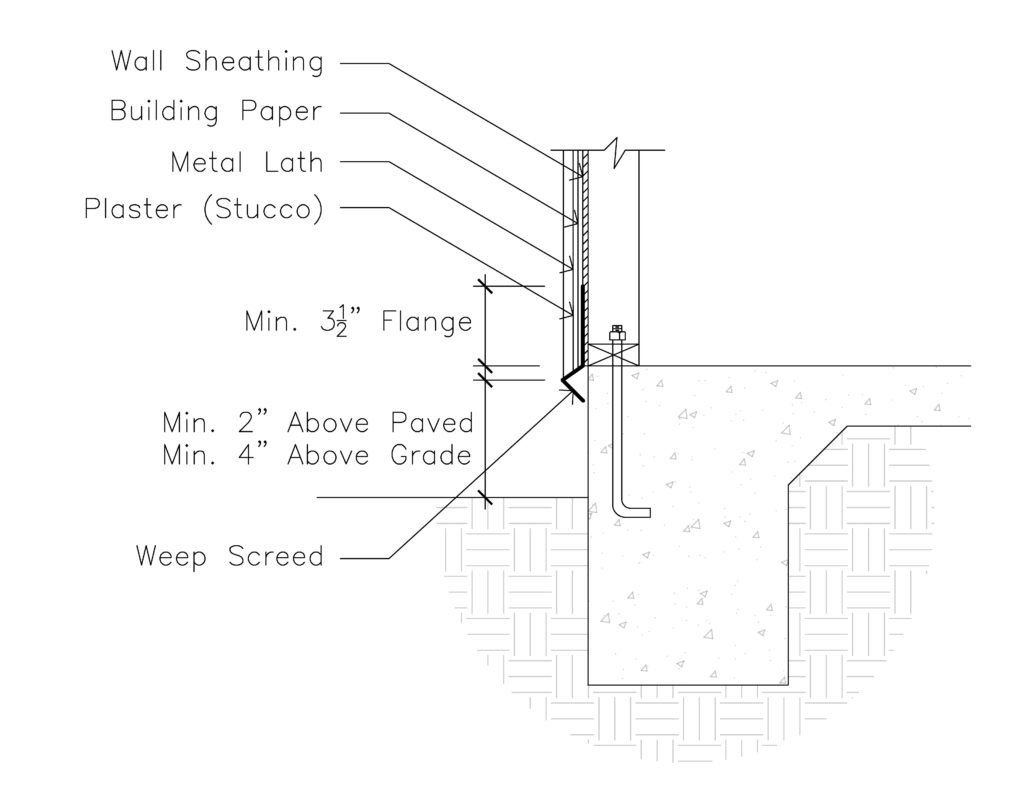Per Chapter 7 of the International Residential Code (IRC), a continuous weep screed is required to be installed at the bottom of exterior plaster (stucco) walls to allow moisture to escape.
Why is a Weep Screed Necessary?
Installing plaster (stucco) on the exterior of a building is very common and since this material is porous, meaning it is very absorbent, water and moisture can penetrate it and travel down the exterior face of the moisture barrier behind the plaster (stucco) and make its way down the wall.
This is why a weep screed with weep holes is required. It provides a way to release the moisture that gets through the exterior plaster (stucco). Without a weep screed installed, moisture that gets behind the wall covering will want to find a way to get out and most likely it can go through the interior of the building causing leaks and possibly damaging the wall studs.
Where do I Install the Weep Screed?
Section R703.7.2.1 of the 2018 International Residential Code requires the weep screed with weep holes to be a minimum 0.019 inch thick (No. 26 galvanized sheet gage), corrosion-resistant, or plastic.
The vertical attachment flange must be a minimum 3-1/2 inch and be placed at or below the foundation plate of the exterior stud wall. It shall also not be placed less than 4 inches above the earth or not less than 2 inches above a paved area.
The weep screed used shall be of a type that allows trapped water to drain to the exterior meaning it should have drain holes in them. The moisture barrier installed on the wall behind the plaster (stucco) shall lap over the flange part of the screed that is attached to the wall. Then the exterior lath shall cover and terminate on the flange of the weep screen.
To better illustrate this, check out the weep screed detail below.
Weep Screed Detail

So this sums up the basic code requirements for weep screeds.
For more information regarding detailed requirements of weep screeds for residential structures, be sure to check out Section R703.7.2.1 of the 2018 International Residential Code (IRC).
.
* Reference Source – 2018 International Residential Code – [Buy on Amazon]
